‘A gatherer of impedimenta’: that’s how the ceramic artist Gillian Lowndes (1936–2010) characterised herself. A ‘gathering of impedimenta’ could equally describe her weird, junky bricolages, which defy easy identification or categorisation. In the sculptures that comprise ‘Gillian Lowndes: Radical Clay’ at the Holburne Museum in Bath, I think I spot a tea-strainer, bulldog clips, loofahs, a teaspoon, the head of a hammer, antique nails, shards of terracotta pots, a fragment of metallic signage, and pyrometric cones, used to judge the temperature of kilns. It’s a spoilheap of a show, for all that it contains only 11 works. I don’t judge the curators too harshly for resorting to the catch-all ‘mixed media’ in their labelling.
From the late 1970s until her death, Lowndes fired unlikely materials together at some 1,300°C until they melted, cracked and/or fused together. If they didn’t behave as she wished, she simply used glue – an unspeakable sin, as far as the ceramics orthodoxy of the day was concerned – or buried them in sand, or smashed and reassembled them. The result: strange assemblages that could have been excavated from a medieval midden, dredged up from the silt of the Thames, or cadged from some Essex landfill.
Lowndes’ work has long existed in an uneasy space between the worlds of craft and fine art. She trained in the pottery department at the Central School of Arts and Crafts in London (where she was scolded by the schoolmarm-ish Dora Billington for using newspaper in her work), then later taught ceramics at her alma mater and at Camberwell School of Art, where she influenced a generation of innovative potters. Yet as she put it, underplaying her own mastery: ‘I hate technical process and I find glazing dull and tedious.’
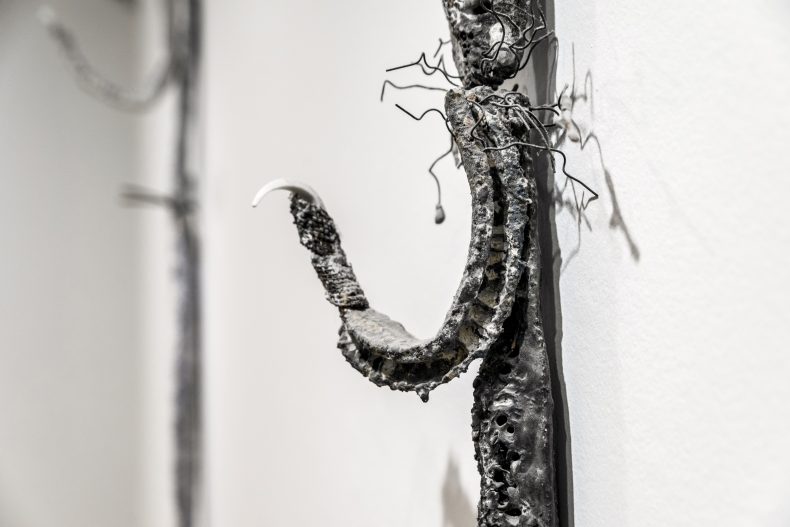
Hook series (2008; detail), Gillian Lowndes. Photo: Jo Hounsome; courtesy Holburne Museum
Her work has less in common with the studio pottery of the day than with the junk collages of outsider artists, or experimental sculpture by the likes of Eva Hesse, who, like Lowndes, explored the aesthetic potential of industrial materials such as latex and fibreglass. In the early 1980s, Lowndes’ Brick Bag series saw her combining London bricks with fibreglass tissue to create sack-like sculptures, inspired by the heaps of rubbish that accumulated in the capital during the refuse collectors’ strike of 1978–79. The works were a breakthrough, marking her new focus on the use of found objects. Yet for all this, Lowndes mostly exhibited in craft galleries and was covered by the craft press, neither of which will have done wonders for her wider reputation.
As with so many late, great women artists, Lowndes is now experiencing a degree of interest that largely eluded her during her life. In 2012, the first monograph was published on her work; in 2016, The Sunday Painter mounted a solo exhibition – the largest London show of her work in 20 years. The Holburne, however, is still justified in calling her ‘one of the art world’s best kept secrets’.
Part of the problem is the sheer awkwardness of the things, which I suspect appeals to critics more than collectors. ‘Radical Clay’ features works made between 1990 and the 2000s, almost all of which sprout tufts of nichrome wire as uncouth as a hog’s bristles. There are several pieces from her Hook Figure series: loofahs dipped in porcelain then fired, burning out the organic matter and leaving just a frazzled skeletal form. The loofahs brandish claws from either end, like some evolutionary oddity. Animal, vegetable, mineral? All the above? It’s a far cry from the decorous ceramic art made by her contemporaries that has soared on the secondary market in recent years.
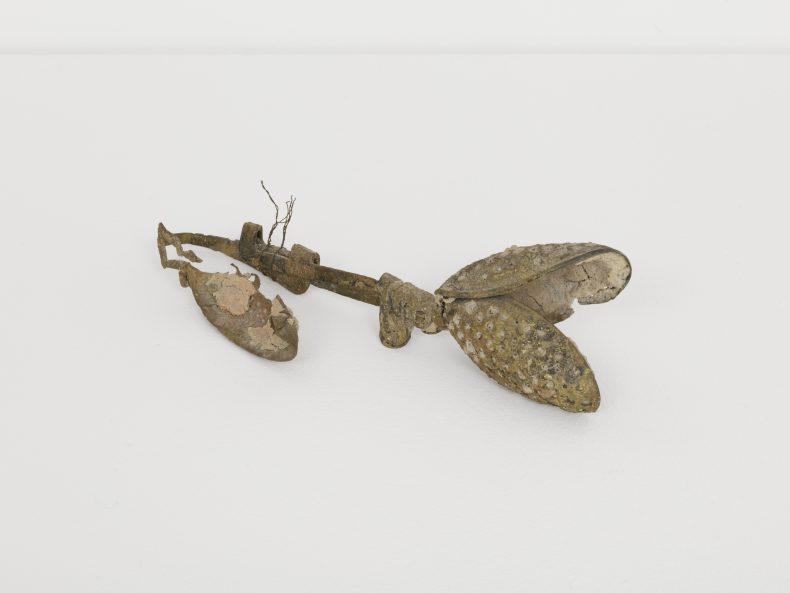
Another Cup of Tea (2005), Gillian Lowndes. © The Sunday Painter
It’s hard to say what any of it might mean, but that doesn’t seem to matter very much. The push-pull between representation and abstraction and the poetic associations generated by these forms, offer plenty to the viewer. When looking at Another Cup of Tea (2005), in which a crud-encrusted tea-strainer gapes open like a toothless mouth, I think of the artefacts that future archaeologists will find: all the accidentally Lowndes-like assemblages currently congealing beneath our feet.
At the Holburne, Lowndes’ unlikely objects are sandwiched between galleries of Northern Renaissance portraits and of 18th-century British painting, a juxtaposition that renders them all the stranger and all the more potent. The modest scale of the exhibition is a tease that leaves this reviewer wishing for more. Here’s hoping that Lowndes’ time really is now.
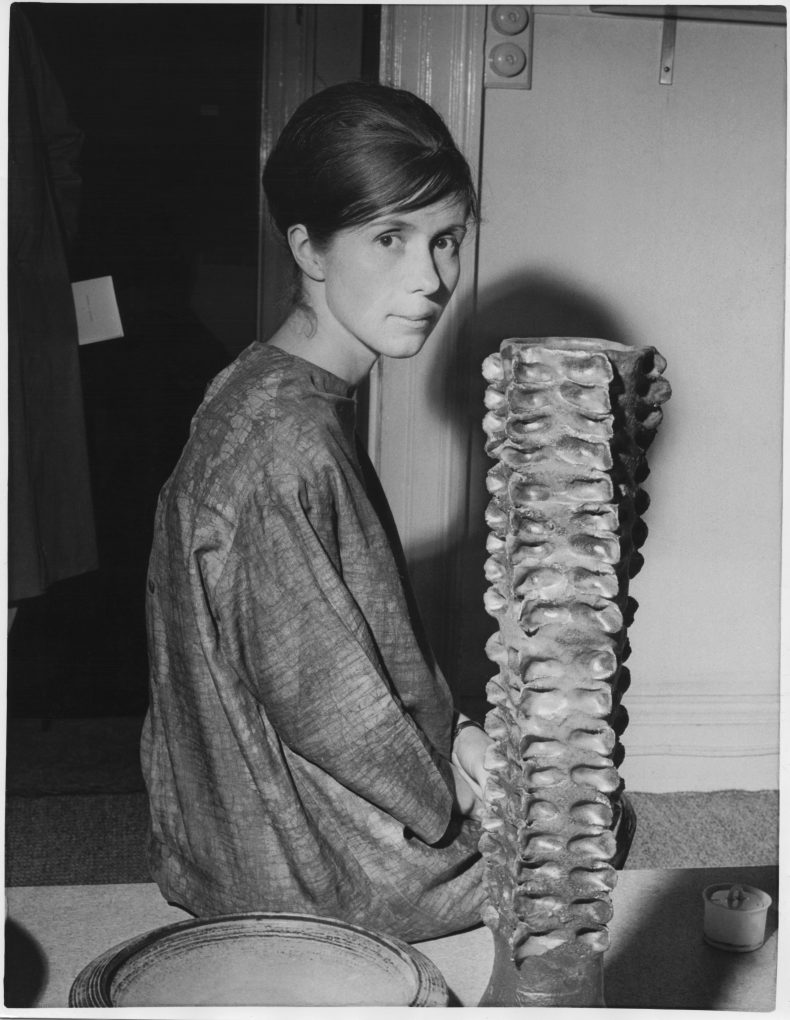
Gillian Lowndes at her first solo show, Bristol Guild, 1963. Photo courtesy Gillian Lowndes Archive
‘Gillian Lowndes: Radical Clay’ is at the Holburne Museum in Bath until 21 April.
Unlimited access from just $16 every 3 months
Subscribe to get unlimited and exclusive access to the top art stories, interviews and exhibition reviews.

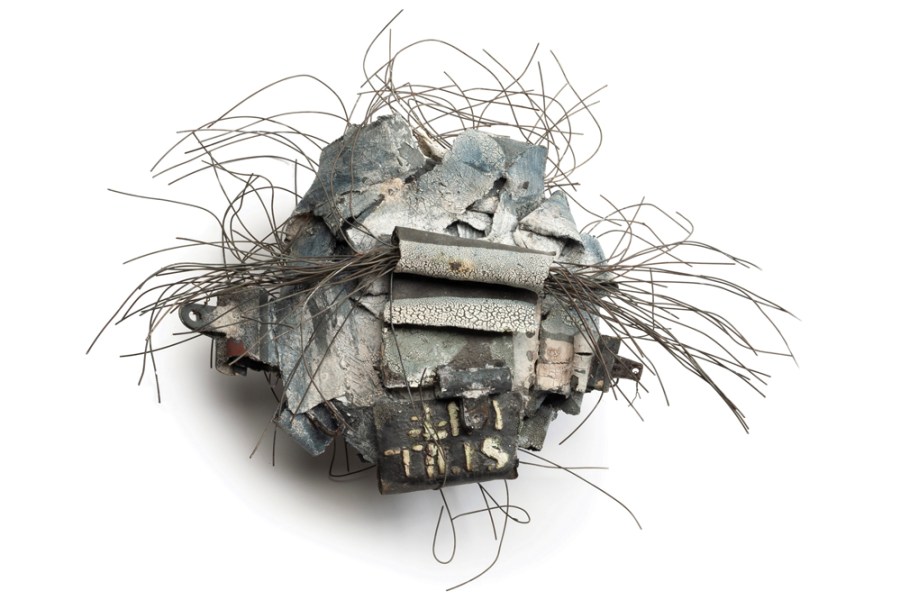
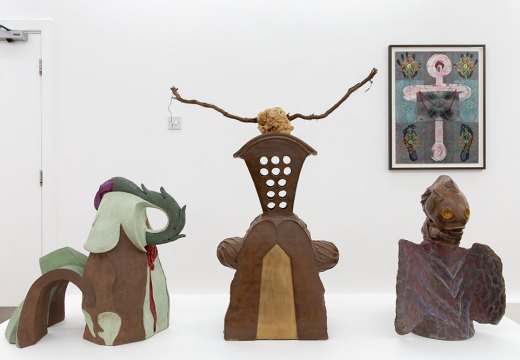
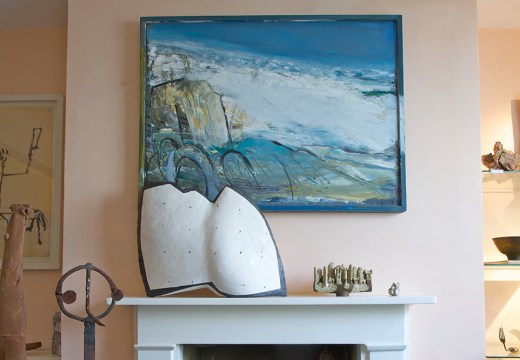
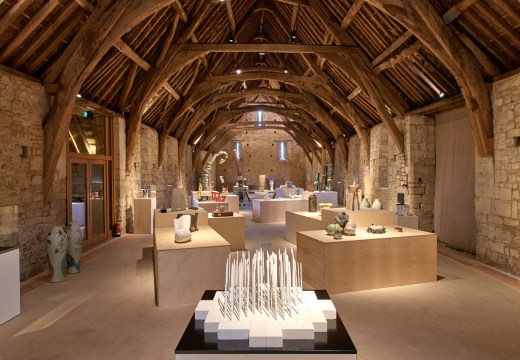









![Masterpiece [Re]discovery 2022. Photo: Ben Fisher Photography, courtesy of Masterpiece London](http://www.apollo-magazine.com/wp-content/uploads/2022/07/MPL2022_4263.jpg)
It’s time for the government of London to return to its rightful home